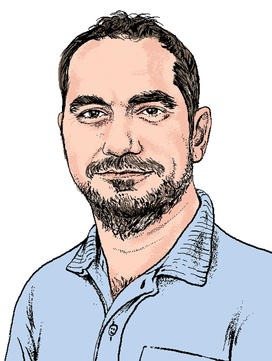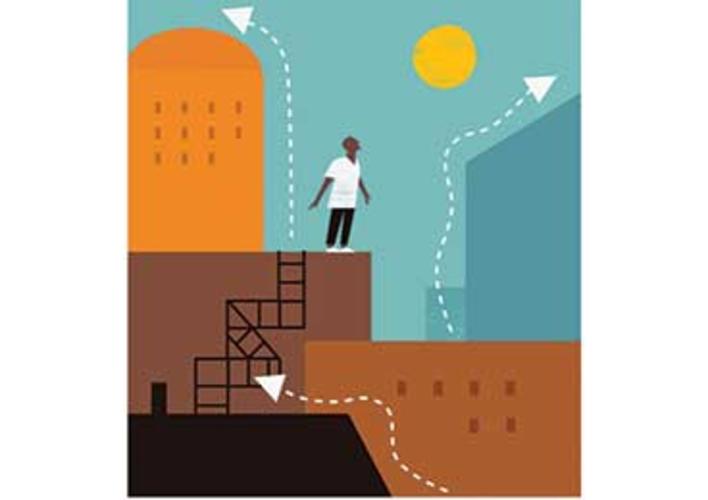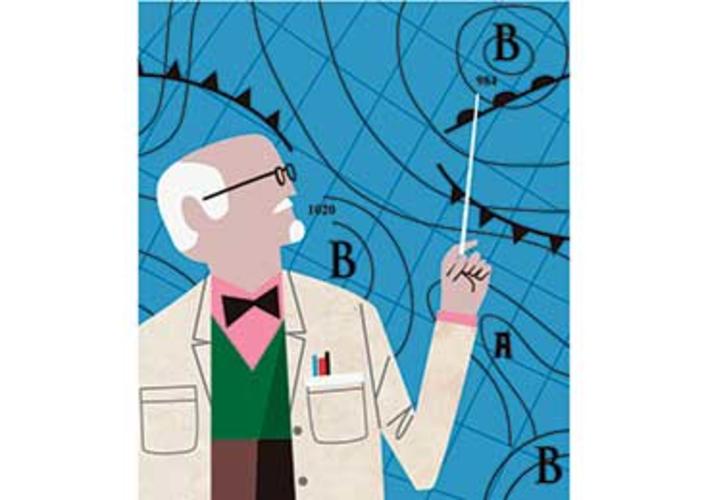Going With the Flow to Make Cities More Sustainable
Behind the Research: Elie Bou-Zeid, civil and environmental engineering

Growing up in Lebanon, Elie Bou-Zeid was fascinated by planes, race cars, and other things that go fast. When he started studying mechanical engineering as an undergrad, however, he realized that he could have a greater impact on the world by understanding the slower processes shaping our environment through the flow of wind and water.
“I became very sensitive to the environmental problems we had in Lebanon, and realized that fluid mechanics are more interesting and complex — and can have more real-world consequences — when applied to studying the environment than to designing cars,” he says.
Much of Bou-Zeid’s research focuses on cities, a huge part of the Earth’s ecosystem. “If we want to reduce our environmental footprint, cities are where we need to take action,” he says. “They are the most important battleground to mitigate, and adapt to, climate change.”
Bou-Zeid’s Work: A Sampling
URBAN CANOPIES Building design can have a dramatic effect on a city’s air quality. Subtle changes in shape can redirect air flow, affecting street-level ventilation of harmful chemicals, such as car exhaust. “If you have round roofs or sloped roofs or flat roofs, the ventilation is vastly different,” Bou-Zeid says. In a recent study of “urban canopies” using models to measure turbulence, he found that round roofs almost doubled ventilation compared to flat roofs. In another study, he found that rough exterior walls behave very differently than smooth ones, necessitating a change in the way that urban planners calculate the exchange of heat between buildings and the surrounding air.FEELING THE HEAT Human activity turns up a city’s temperature — creating urban “heat islands” that can be 5 to 10 degrees hotter than the surrounding region. “This can be a severe threat to citizens,” Bou-Zeid says, noting that climate change will exacerbate the impact of heat waves. He has pioneered research to more accurately calculate — and mitigate — how temperature and rainfall within cities are affected by heat islands. In one study, he has shown how increasing vegetation-filled green roofs and reflective “cool roofs” can significantly reduce the temperature and flooding.
LOW BLOWS When meteorologists forecast wind and weather, they mostly look at air flow in the atmosphere far above where people live. Bou-Zeid has helped to develop better models to consider wind and rain in the first half-mile above the Earth’s surface, taking into account the distinctive topography of both natural and manmade features. Such models can help to develop renewable energy by determining the ideal location for wind farms, or creating accurate, ongoing predictions of when solar panels can capture sun through cloud cover. “We are at a time when the social need for very accurate predictions of conditions for the surface are more important than ever,” Bou-Zeid says.














No responses yet